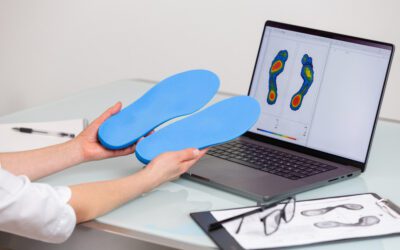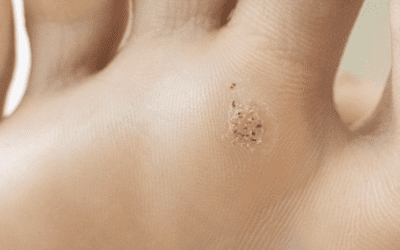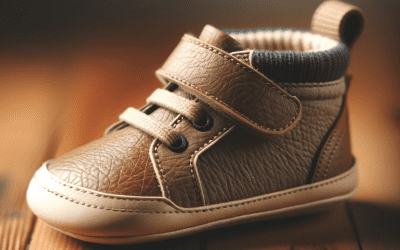In our daily quest for mobility and agility, we often make the mistake of overlooking a vital part of our body that bears the weight of our entire existence: our feet. Capsulitis, a widely prevalent disorder, precisely targets this neglected part of our anatomy. This condition can cause pronounced pain and a significant reduction in mobility before delving deeper into this exploration, it is crucial to understand what a joint capsule is.
It encompasses the joints, providing the necessary lubrication and support for smooth mobility. In cases of inflammation, pain and discomfort can become constant companions let us navigate through the history, symptoms, and treatment of foot capsulitis, with particular attention paid to the role of the podiatrist in restoring the normal function of the foot.
History and Anatomy Foot Capsulitis
Historically, the recognition and treatment of capsulitis have evolved over the years, initially regarded as a rare disease, it gradually gained recognition as a distinct condition requiring specialized intervention. The foot, a complex of joints and ligaments, is a common site for this ailment. The joint capsule, a structure that surrounds and protects the joints, plays a vital role in the mobility of the feet. When this capsule is inflamed, it is referred to as capsulitis.
With increasing pressure on the joints of the foot, the symptoms primarily manifest in the plantar region, often affecting the toes. Ignored foot pain becomes a daily presence, seriously hampering quality of life. In this context, the role of a podiatrist, an expert clinician in foot and ankle disorders, becomes crucial.
Symptoms and Signs Foot Capsulitis
The symptoms of foot capsulitis are varied. Plantar pain is often the first sign, accompanied by increased sensitivity in the toe region. The presence of foot capsulitis also manifests as reduced mobility, increased pressure, and persistent inflammation. It is common to experience pain similar to a stone bruise or plantar fasciitis.
Causes Foot Capsulitis
The etiology of capsulitis is vast, one of the common causes is the wearing of inappropriate shoes, which exert excessive pressure on the foot, thereby leading to inflammation of the joint capsule. Conditions such as rheumatoid arthritis, leg length discrepancy, or a tear in the plantar plate can also be underlying causes. Stress fractures, often encountered in athletes, are also significant risk factors.
Prevention is a crucial step in managing foot capsulitis, choosing footwear that is suitable for the feet, paying particular attention to the biomechanics of the feet, and using measured orthotic insoles can play a vital role. Athletes, especially those involved in running, need to be particularly vigilant. Dysfunction of the plantar plate can quickly evolve into capsulitis, making prevention even more important.
Tips for Athletes
The world of sports is a fertile ground where foot capsulitis can easily proliferate. Athletes, by the very nature of their discipline, impose considerable stress on their feet. That said, there are preventive and reactive strategies that can be adopted to avoid or manage this condition.
Shoe Selection
Foot-suitable shoes are not just a necessity for comfort, but they also serve as the first line of defense against disorders like capsulitis. Athletes should opt for shoes that offer adequate support, particularly around the joint capsule region. Wearing shoes with good cushioning can significantly reduce the risk of developing conditions such as plantar capsulitis or capsule inflammation.
Running Techniquess
Proper running technique is crucial, athletes should consider working with experts to develop a running technique that minimizes stress on the feet. For example, avoiding running on the toes can reduce pressure on the plantar plate, thereby decreasing the chances of plantar plate tears and other associated complications.
Proactive Rehabilitation
In the event of capsulitis symptoms, it is imperative to act swiftly, this might involve a temporary modification of training, incorporating therapies like shock wave treatments, or even a quick consultation with a podiatrist for a personalized treatment plan.
Exercises and Physiotherapy
The active management of foot capsulitis often goes hand in hand with an enlightened physiotherapeutic approach, here are some strategies that might be beneficial.
Muscle Strengthening:
Targeted strengthening exercises can help support the foot structures, thereby reducing strain on the joint capsule. These exercises can be guided by a podiatrist or a physiotherapist who understands the complex mechanisms of the foot.
Stretches:
Regular foot and ankle stretches can improve mobility and reduce the symptoms of capsulitis. Stretching can also prevent other complications, such as leg length discrepancy, that can occur as a result of capsulitis.
Massage Therapy:
Massage therapy is another effective method for managing the symptoms of capsulitis. By targeting specific areas of pain and tension, massage therapy can alleviate pain and improve foot function.
Home Treatment:
Home treatment is a viable option for managing initial symptoms. It can include measures to relieve pain, such as warm foot baths, and using comfortable shoes to reduce pressure on the affected area. It is also advised to cut down on activities that exacerbate foot pain, such as prolonged walking.
Podiatrist Treatment Foot Capsulitis
In this section, we focus on the clinical treatment of foot capsulitis.
The podiatrist, equipped with an arsenal of therapeutic techniques, can step in to reverse the damage and restore the foot’s normal function. Therapies such as shock wave therapy can be used to treat capsule inflammation.
In cases where foot pain persists, a consultation at a podiatric clinic becomes imperative. Custom-made orthotic insoles, designed to correct plantar plate dysfunctions, can be prescribed. Moreover, the podiatrist might suggest interventions to treat associated conditions like hallux abducto valgus or Morton’s neuroma.
In summary, foot capsulitis
Is a complex condition, affecting a variety of patients, ranging from athletes to individuals with jobs requiring long hours of walking. Foot pain, toe pain, and inflammation are common symptoms that require appropriate clinical intervention.
Prevention remains a cornerstone in the management of this condition, with a particular focus on choosing the right footwear and paying attention to the overall health of the foot. The role of the podiatrist, as the guardian of foot health, is invaluable in diagnosing and treating capsulitis.
With well-designed therapeutic strategies, it is entirely possible to overcome this affliction and regain an active and mobile life.
Remember that preserving mobility and reducing pain involve swift intervention and consulting an experienced podiatrist in case of persistent symptoms. This journey of discovering capsulitis has allowed us to understand the complexity of this condition and the importance of timely clinical intervention to ensure complete healing and a return to an active and healthy life.
Frequently Asked Questions Foot Capsulitis (FAQs)
What is Foot Capsulitis?
Foot capsulitis is an inflammation of the joint capsule, a structure that envelops and protects the joints of the foot. This condition can cause considerable pain and limit mobility.
What are the main symptoms of Foot Capsulitis?
The typical symptoms include pain and sensitivity in the foot region, particularly around the toes, reduced mobility, and persistent inflammation.
How can one prevent Foot Capsulitis?
Prevention can involve choosing suitable footwear, adopting proper running techniques, and lifestyle adjustments, such as incorporating strengthening and stretching exercises into the daily routine.
When should I consult a Podiatrist?
If you are experiencing persistent foot pain, or if you notice signs of inflammation or reduced mobility, it is advised to consult a podiatrist for a diagnosis and personalized treatment plan.
What are the available treatments for Foot Capsulitis?
Treatments can vary from person to person, but they may include physical therapies, custom-made orthotic insoles, and in some cases, surgical intervention might be recommended.
Can Foot Capsulitis return after treatment?
Yes, foot capsulitis can recur, especially if preventive advice is not followed. Regular follow-up with a podiatrist can help prevent relapses.



